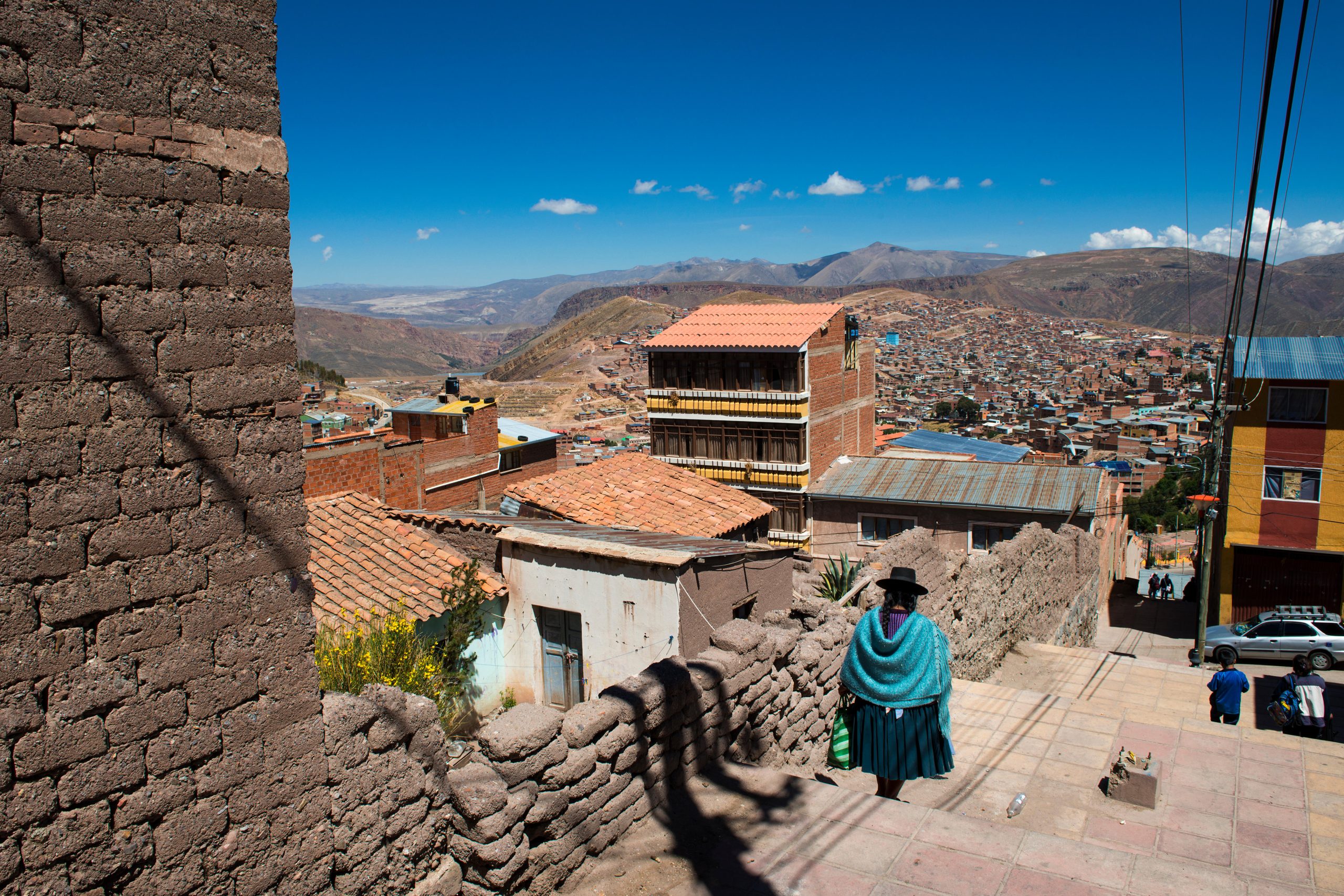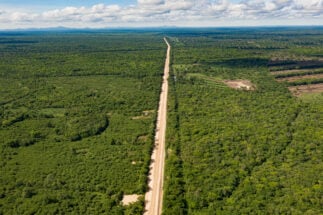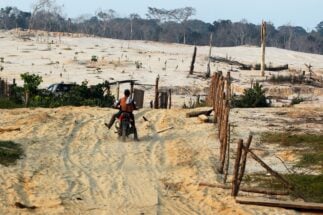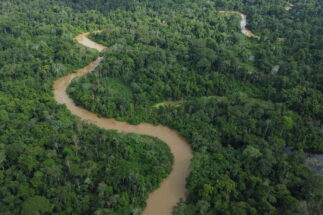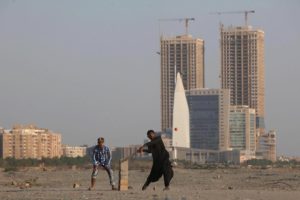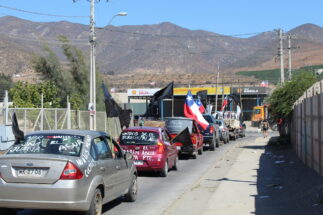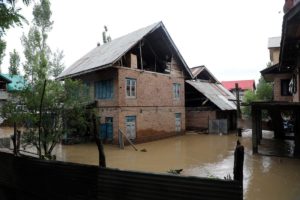Potosí is a place with a chequered history. Perched in Bolivia’s southern highlands at an altitude of over 4,000 metres, the city may have been one of the richest in the world during the Spanish colonial era. But two centuries later, despite being home to many archaeological remains, great biodiversity and mining sites, it has become one of the poorest corners of Bolivia.
Many of its inhabitants say Potosí’s disconnection from the rest of the country is the main cause of its hardships. For this reason, the government has in recent years proposed a new road that would help ease this isolation and link the city with Cochabamba department to the north – and thus to the whole of Bolivia. As residents express hope that this could bring improvements to their quality of life, some experts have pointed out the need for careful planning to ensure the project does not harm Potosí’s intangible wealth.
Fifteen years of waiting
The cities of Potosí and Cochabamba, both capitals of the departments of the same name, are separated by more than 520 kilometres, a journey that currently takes more than 10 hours by road. But last October, the Potosí government and Sedeca, the department’s road authority, initiated a new road project, reaching an agreement with China Railway Group Limited (CREC) to take charge of the design and subsequent construction, a Potosí government representative told Diálogo Chino.
The proposed road, provisionally called the Tinku Integration Highway, after a traditional dance in the Andean department’s communities, would begin in Tinguipaya, Potosí, and end in Achamoco, Cochabamba. According to proposal documents, the road will be 259 kilometres long, of which 222 km are on the Potosí side, and would cross the territory of more than 30 indigenous communities.
259 km
The proposed length of the Tinguipaya to Achamoco road, which would cross more than 30 indigenous communities
This proposed route crosses a number of diverse landscapes and ecologies, from the valleys, at an altitude of 2,300 metres, to the altiplano – the Andean plateau – at more than 3,700 metres. It is a fertile land, where most residents work in agriculture, including the cultivation of potato varieties, fruits such as apple and tumbo, a type of passion fruit, and vegetables such as carrots. It also host to a great diversity of fauna, including bats and camelids.
Farmer Basilio Paniagua, from Apillapampa, a community on the border of Cochabamba and Potosí, says that people in the area changed from a focus on corn and wheat production to tumbo, with which they make juices, alcoholic beverages and jams, among other products. But as road connections in the area are limited, they are unable to move their products.
Currently, the villagers in the border area have to pass through the departments of Oruro or Chuquisaca to get their produce to the cities. “We find it very difficult in rainy weather. There are landslides, the road is washed away. Sometimes we have to walk along the rivers, which are very rough places. That’s why we insisted that there should be a road connecting to Cochabamba. We have suffered for so long,” says Hilarión Capusiri, a Potosí resident.
Amalia Capusiri Casana, a member of the Potosí Assembly, explains to Diálogo Chino that this project was first touted in 2005, and only in 2013 did they approve Law No. 046, which declares the creation of a Potosí–Cochabamba asphalt road “a departmental priority and necessity”. She adds that, since that date, no progress had been made until the latest development with CREC.
On the other side of the border, the Cochabamba Departmental Assembly is similarly working to create a law that gives “priority” to this project, member Ariel Herbas told Diálogo Chino.
Beyond agriculture, Potosí is rich in mineral resources. The highway will pass close to the Mallku Khota deposit, where there are estimated to be as many as 230 million ounces of silver, and similar quantities of indium, gold, copper and gallium.
Juan Téllez, strategic advisor to the Potosí government, told Diálogo Chino that the construction of the road will also benefit mineral exploitation by facilitating its commercialisation in the cities. “The construction of this road will articulate and dynamise the exploitation of mineral resources,” he said.
Archaeological value
On our visit, villagers on the border of the two departments openly express their desire for the proposed road’s construction, to open up greater opportunities to expand their agricultural production and improve their economy. However, the road crosses archaeological zones, several ecological zones and a mineral deposit, as well as having a high cultural value, all of which could be affected by an inadequately planned construction project. If well managed and protected, however, these may also serve as an attraction for the area.
“The north of Potosí is one of the regions with the greatest cultural diversity, where millenary symbolism, handicrafts and weavings are preserved. It is one of the most extraordinary basins we have. It offers an extraordinary dimension for community tourism and to exploit and develop culture and art,” explained Juan Téllez.
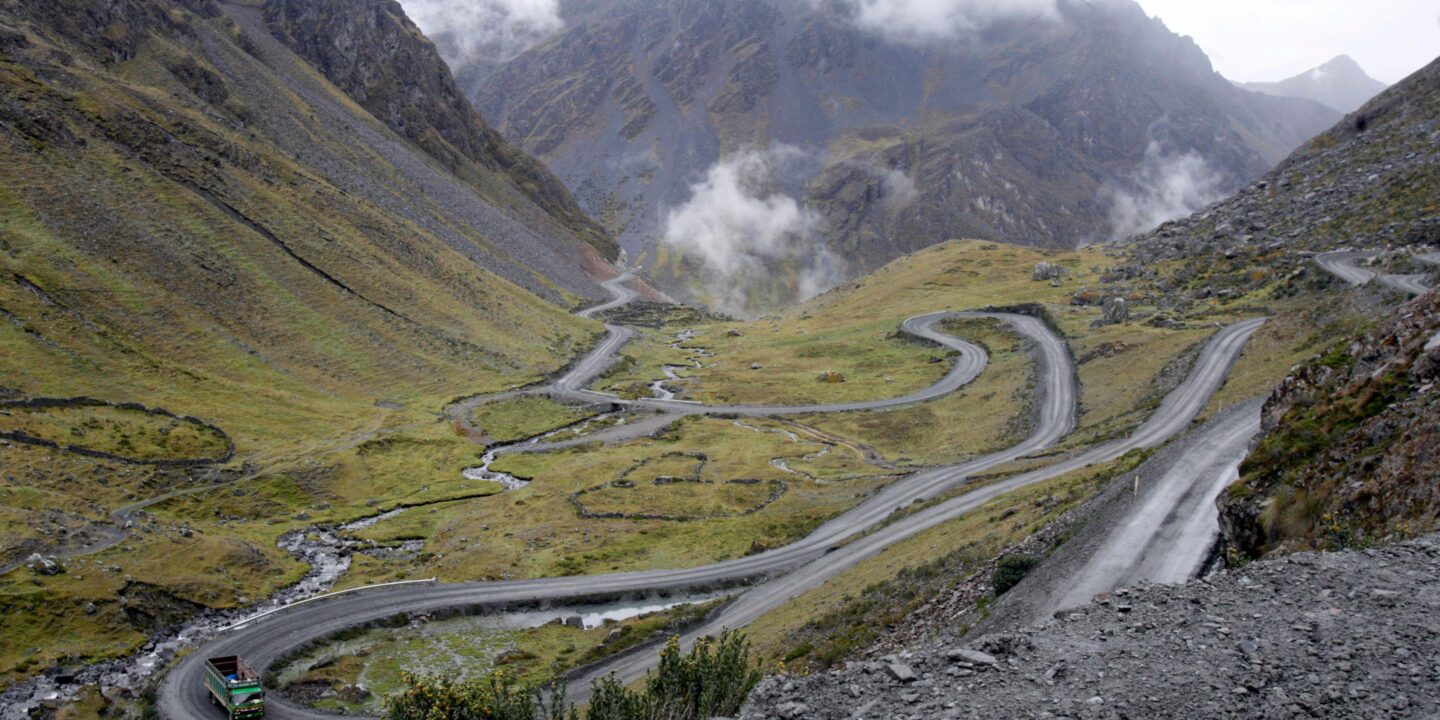
Gabriel López, an environmental engineer who has advised on multiple road projects in Cochabamba, also points to threats to the area’s rich archaeological heritage as a concern. “Bolivia has a wealth of pre-Columbian cultures. There are remains buried [in the area] that are valuable. They will not have a great economic value, but the archaeological and heritage value for our country is very high,” he said.
López emphasises that these aspects should be taken into account before starting the construction of the road: “When a road is built, there are many excavations that are carried out in areas that have not been studied or altered. So, when there are these excavations, it is easy to come across these [archaeological pieces].”
The specialist highlights that this type of work has a long-term social impact that can affect the dynamics of the areas surrounding a road. “Every large-scale road project has a strong environmental impact, not only because there are different physical and biological aspects, affecting the soil, vegetation and fauna, but also because there is also the social issue. Just as it helps them to have access to national roads, it also affects them,” he says.
A proposed route
Although the project presented by CREC and approved by the Potosí government already has a proposed route mapped out, the Environmental Categorisation Level Form is only now being drafted. This form is required under Bolivian law to begin the application for an environmental licence, a process with which all works must comply.
“The road does not have an [environmental] study, which determines the cost of the project. We don’t have the study, but this agreement is ready to go. It is the same company that is going to carry out the studies for its subsequent execution,” explains assembly member Amalia Capusiri.
López questions the fact that the route of the road has already been defined without prior categorisation to determine the physical, biological, socio-cultural and archaeological circumstances of the area.
For his part, Téllez, the advisor to the Potosí government, estimates that the environmental study will be completed in the next few months, while Amalia Capusiri believes that it will only be finished next year, though still allowing for construction to begin soon after. The cost of the project could be in the region of US$400 million, according to Téllez.
The goal of the Potosí government is to obtain financing from China. “We have talked about this project and also with the Chinese company CREC, and the [Chinese] ambassador expressed his willingness and interest in doing what he can to obtain financing for the construction of this road,” said Tellez.
Divided positions
Back at the community level, farmer Basilio Paniagua reiterates the complex situation they live in due to the lack of roads: “In rainy weather we can’t get our products out, we don’t have bridges. At the river, we are stuck until midnight.”
While work is being done on studies of the area, some community members have begun attempts to “socialise” the project; this work involves disseminating information around the proposed road, and asking, in particular, those who will be on the edge of the construction site if they will give up part of their land to the project for the community’s benefit.
Any road project will always be aimed at ‘progress’. But, from the design, contracting and environmental aspects, there are several issues that need to be analysed
“Their plots of land and their houses could be affected, they already have to be planning ahead so as not to have difficulties. We are socialising with them because the road is the most important thing for them to travel,” says Hilarión Capusiri.
Although the Potosí government has emphasised the need for the road, environmental experts agree that there is currently a lack of information about the risks. “Any road project will always be aimed at ‘progress’. It will bring benefits to communities that are far away, that don’t have access. It will always be a positive thing,” claims López. “But, from the design, contracting and environmental aspects, there are several issues that need to be analysed.”
While the wait continues for CREC to carry out the environmental study, and without a precise start date to works, opinions remain divided between those who want to see the promise of a road first mooted more than 15 years ago finally realised, and those who warn of the potential risks.
